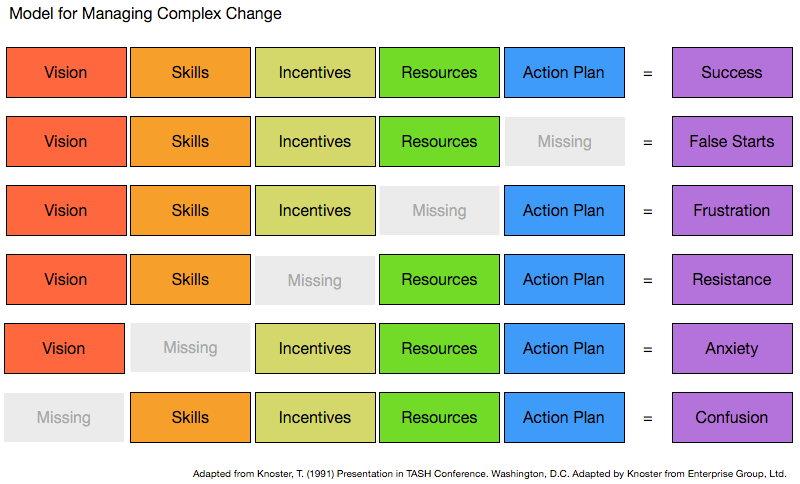How do you get from ‘the new thing’ to ‘the way we do things now’?
Introducing a new piece of software is a change, no matter how small. Technology, by its nature, forces you to adjust the way you do things. The goal is to get the most out of your new tool and ensure it’s a positive experience that continues to pay forward a culture of healthy change and rejuvenation.
A number of schools in our customer community began their journey questioning their ability to introduce another software program, informed by previous frustrations.
One principal summed it up:
“I will only buy a program, no matter how good it is, that I know my staff will use. Can you help us?”
As a 30-year school veteran, I had total empathy with their plight, and knew they weren’t alone.
Our Customer Experience team at EdSmart helps hundreds of schools of different shapes and sizes. Our largest client has 90,000-plus students, our largest school has 3,600-plus students across four campuses, and our smallest school has only 26 students.
Change is rarely a straight line. It is an interlinked journey, not a single event. It comes in many forms and there are plenty of models for managing it. One I’ve found particularly helpful for schools is the Knostner Change Model.
Knoster’s premise is that six elements – Vision, Consensus, Skill, Incentives, Resources and an Action Plan – must all be present for change to be successful. When they’re not, barrier behaviours (in purple below) arise.
 VISION
VISION
Simon Sinek’s Start with Why thinking has helped many of us to consider Vision before embarking on change. Your ‘Why’ needs to be both a unifying force and have reasonable consensus among those involved. Staff need to know – and buy into – why they are pushing forward.
Advice
- Ensure the ‘Why’ aligns with the mission of the school
- Ensure it’s clearly communicated in real and human terms to all
- Make the ‘what’s in it for me’ easy to connect with, and access
Otherwise: Confusion and, possibly, even sabotage
SKILLS
Everyone involved needs to have the ability to work on the transformation (fulfilling their piece of the whole) and, more importantly, have the skills to thrive once the initial transformation is complete.
Advice
- Make training an explicit part of your change action plan
- Allow significant time for training, including experimentation and play
- Ensure this resource is part of the budget
Otherwise: Anxiety
INCENTIVES
People naturally resist change. The unknown carries risk, and change takes energy and labour (physical and emotional). Motivation needs to be intrinsic, as well as extrinsic. Superficial carrots aren’t enough to make meaningful change stick.
Advice
- Incentive is a nuanced concept (see the work of Daniel Pink). You need to consider what moves people to intrinsic motivation and drive
- Cultivate a close connection to the ‘Why’
- Clearly articulate the benefits to the school and the individual staff member/s
Otherwise: Resistance
RESOURCES
Sometimes, change requires very little in terms of the practical resources beyond the software program itself, but a lot in terms of the individual involved (i.e. learning a new way to do things). A resource-deficit will make progress very slow and ferment further frustration.
Advice
- Like a lesson plan, resources need to be accounted for
- The most valuable resource in a school is its staff – and their most valuable resource is time
- A plan that allows for this ingredient honestly has a better chance of being successful
Otherwise: Frustration
ACTION PLAN
Great leadership, energy, lots of money and a superb vision isn’t enough without a cogent plan that is shared and understood. You must show your people how things will unfold in a way that feels real and executable. The plan might change, but there always needs to be one.
Advice
- Action plans don’t have to be too complicated, as small transformation changes can be done with little structure
- Make it a team effort
- Communicate the plan not just to staff but students and parents too (where appropriate). Schools are communities and most things impact all three groups
- It is useful having a person lead the charge (or a few) and everyone else agreeing that they’re the right person to make things happen
Otherwise: False starts and treadmill
In a recent chat with Motti Blum, a young entrepreneur whose start-up Real Response is successfully scaling up very quickly, I asked him if it was getting harder as well. He said he leans on the words of Greg LaMond (World Champion Cyclist):
“It doesn’t get easier, you just get faster”
Change is a constant in our schools and our lives. Treat it as part of a magnificent journey with many ebbs and flows along the way. Great leaders in education, technology – and educational technology – embrace it and ride faster.
“Lost paperwork is almost unheard of now, but if a parent has accidentally deleted a slip it is very simple to resend it.”
Burnside Primary, South Australia



